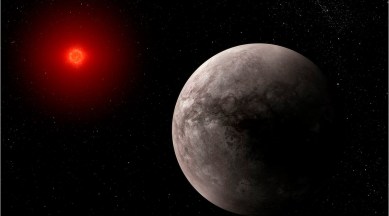How observing flares on this distant world can help search for alien life
Here is how observing stellar flares in distant systems can help researchers search for planets that can host life.

Astrophysicists, using the James Webb Space Telescope, looked at four solar flares exploding from around the star TRAPPIST-1—-a small and active celestial body located about 40 light-years from our planet. Studying the flares could help scientists search for distant planets that resemble Earth and maybe could even support life.
According to Ward Howard, lead author of a new study accepted for publication in The Astrophysical Journal, this is the first time in history that scientists have been able to look for planets around other stars that have the sort of secondary atmospheres that can be found around planets like Earth or Mars. Howard is a NASA Sagan Fellow in the Department of Astrophysical and Planetary Sciences at CU Boulder.
Now, astrophysicists are using the powerful Webb telescope to see if they can look for traces of an atmosphere around these planets. A recent study was unable to detect traces of atmosphere around TRAPPIST-1 b, one of the planets. But since the system is so far away, astrophysicists can only observe its planets as they pass in front of the star.
But that is difficult when the star in question, TRAPPIST-1, is so chaotic. If you do not account for solar flares in your observation, you could detect molecules in the atmosphere that are not really there or get the amount of material wrong.
Using Webb, the researchers observed flares from a distant star for the first time in certain wavelengths of infrared light. They captured the evolution of those four flares in high detail as they grew brighter and brighter over several hours until peaking and becoming dim again. With this data, they were able to remove 80 per cent of the flare data from the rest of their observations. They can now use this technique to remove the “noise” that is presented by flares.